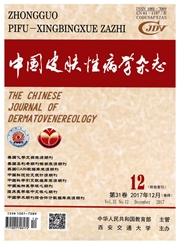

 中文摘要:
中文摘要:
目的探讨0ct4单因子转染人胎儿头皮来源的原代混杂细胞和第3代黑素细胞后,形成多能干细胞的可能性。方法培养人胎儿头皮来源的原代混杂细胞和第3代黑素细胞,应用慢病毒介导Oct4单因子诱导这些细胞。所生成的克隆采用碱性磷酸酶染色及荧光显微镜观察。结果Oct4单因子诱导的第8和第12天,被转染的原代细胞和第3代黑素细胞出现克隆。转染后第18天,人工挑取的克隆接种于基质胶包被板,克隆很快贴壁生长,荧光显微镜下显现出绿色荧光,碱性磷酸酶染色呈紫色。结论Oct4单因子可以诱导人胎儿头皮来源的混杂细胞及第3代黑素细胞产生克隆,但产生效率很低。
 英文摘要:
英文摘要:
Objective To explore the possibility of reprogramming the cells from human fetal scalp into induced pluri- potent stem cells (iPSCs) by using lentiviral vector transfection with Oct4 alone. Methods To isolate and culture primary mixed cells from human fetal scalp, and obtain the purified melanocytes at passage three. These cells were transfected by lentivirus encoding Oct4 alone. The generated clones were observed under a fluorescence microscope and assayed by alkaline phosphatase staining. Results By using lentiviral vector encoding Oct4 alone, the primary mixed cells and melanocytes at passage three from human fetal scalp were successfully reprogrammed and generated iPSCs. The clones could be seen under the microscope on the 8th day and 12~ day after infection, respectively. On the 18'h day, the clones picked up and grew on the plates coated with Matrigel showed immediate adherence. These clones presented with green fluorescence under the fluorescence microscope and displayed positive alkaline phosphatase staining. Conclusion Using lentiviral vector loaded with Oct4 alone could successfully induced the mixed cells and melanocytes at three passages originated from human fetal scalp into forming iPSCs. However, the reprogramming efficiency was very low.
 同期刊论文项目
同期刊论文项目
 同项目期刊论文
同项目期刊论文
 期刊信息
期刊信息
